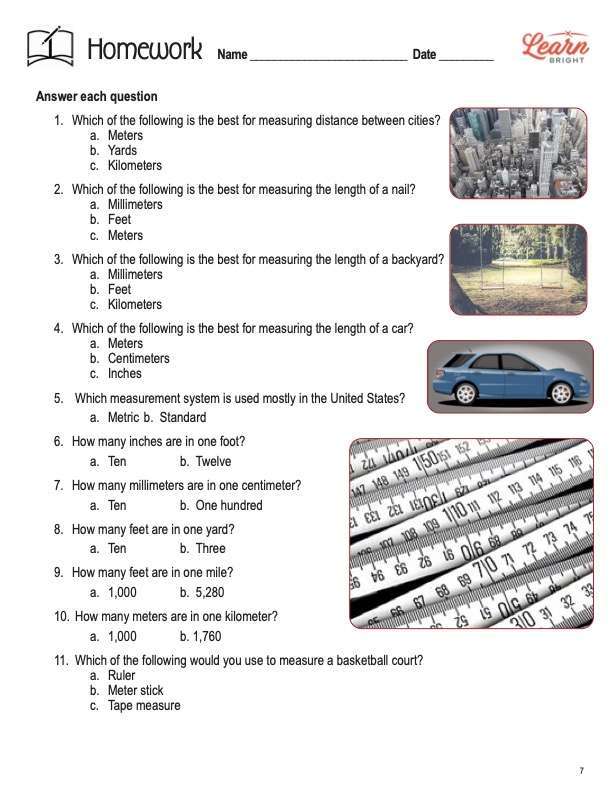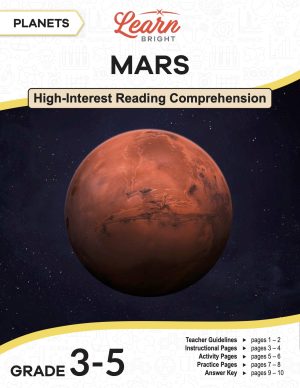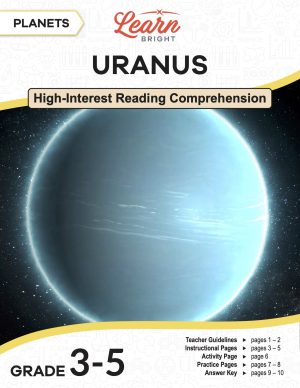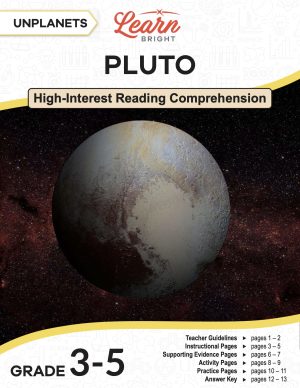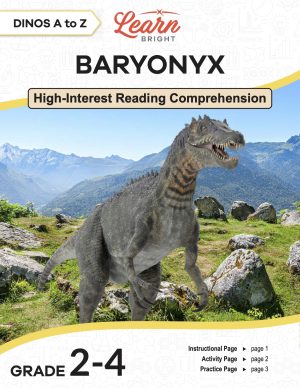Description
What our Measuring Length lesson plan includes
Lesson Objectives and Overview: Measuring Length teaches students how to measure various lengths using both standard and metric units. The lesson describes why people need to know the length of certain objects or the distance between two places. Students will discover that there are many ways to measure the length of something. They will learn about the metric system and the units it uses to measure. By the end, they will know the difference between the metric and standard methods and how to use both. This lesson is for students in 2nd grade and 3rd grade.
Classroom Procedure
Every lesson plan provides you with a classroom procedure page that outlines a step-by-step guide to follow. You do not have to follow the guide exactly. The guide helps you organize the lesson and details when to hand out worksheets. It also lists information in the blue box that you might find useful. You will find the lesson objectives, state standards, and number of class sessions the lesson should take to complete in this area. In addition, it describes the supplies you will need as well as what and how you need to prepare beforehand. The supplies you will need for this lesson include rulers and other measuring tools such as yardsticks, meter sticks, or measuring tapes.
Options for Lesson
Included with this lesson is an “Options for Lesson” section that lists a number of suggestions for activities to add to the lesson or substitutions for the ones already in the lesson. One optional addition to this lesson is to use an outdoor location and have your students number 25 objects like flowers or building parts, having them measure longer items using a yard or meter stick. You could also hold a class discussion about the metric system and standard method in the U.S. and how they affect each other and the people who use them.
Teacher Notes
The teacher notes page includes a paragraph with additional guidelines and things to think about as you begin to plan your lesson. This page also includes lines that you can use to add your own notes as you’re preparing for this lesson.
MEASURING LENGTH LESSON PLAN CONTENT PAGES
Measuring Length
The Measuring Length lesson plan includes two content pages. We have many different tools that we can use to measure the length of anything from a line to a house to a person. However, before you choose your tool, you need to learn how to measure the length of something. Length is the distance from one point to another point.
We have two units of measure: standard and metric. Standard refers to measurements in inches, feet, yards, and miles. Metric refers to measurements in millimeters, centimeters, meters, and kilometers. In the United States, we use standard measurement. Most other countries use metric measurement.
Standard
Most students have seen a ruler before. We use rulers to measure small lengths like pencils or small pieces of wood. Most rulers are 12 inches, but some may be shorter or longer. When you look at a ruler, from the beginning of the ruler to the 1 mark is 1 inch. The small lines in between the numbers represent quarter and half inches.
A 12-inch ruler is equal to one foot. We measure longer items, like cars or rooms, in feet. We can use different tools to measure longer objects. You wouldn’t use a ruler to measure the length of a car. Instead, you might use a tape measure.
Finally, we measure really long lengths in either miles or yards. One yard equals three feet. A football field is about 100 yards long, which we can measure using a yard stick. When you go somewhere in a car, you would measure your trip in miles. One end of the United States to the other measures about 3,000 miles across. However, your trip from your home to your school might only be a mile or two!
Metric
The metric system uses meters or kilometers to measure long lengths and millimeters or centimeters to measure short lengths. Many rulers can measure objects in both inches and centimeters. On the side of a ruler that measures in centimeters, the smaller lines in between the numbers represent millimeters. Always remember that centimeters and inches are not the same and pay attention to which you are using!
The lesson closes with some helpful conversion charts for both standard and metric measurements. For standard measurement, it tells us that 12 inches = 1 foot, 3 feet = 1 yard, 5,280 feet = 1 mile, and 1,760 yards = 1 mile. For metric measurements, it tells us that 10 millimeters = 1 centimeter, 10 centimeters = 1 decimeter, 100 centimeters = 1 meter, and 1,000 meters = 1 kilometer.
Make sure to practice measuring in both systems for both short and long distances!
MEASURING LENGTH LESSON PLAN WORKSHEETS
The Measuring Length lesson plan includes three worksheets: an activity worksheet, a practice worksheet, and a homework assignment. You can refer to the guide on the classroom procedure page to determine when to hand out each worksheet.
MEASURING FEET ACTIVITY
Students will work alone and with others for the activity. First, they will read a short passage about why a foot is 12 inches. Then they will measure their own feet and two others’ feet. Next, they will measure the distance across a room. Then they will count how many steps it takes them to get across the room. They will also count the steps of the same two people.
MEASURING LENGTH PRACTICE WORKSHEET
For the practice worksheet, students will first measure seven lengths using the standard method. They will measure to the nearest quarter-inch. Next, they will use the metric system to measure the same seven lengths. This time, they will measure to the nearest whole number.
MULTIPLE CHOICE HOMEWORK ASSIGNMENT
The homework assignment requires students to answer 11 questions. Several of them focus on figuring out which unit to use to measure certain things, such as the distance between two cities. Other questions focus on testing students’ ability to convert units.
Worksheet Answer Keys
This lesson plan includes answer keys for the practice worksheet and the homework assignment. If you choose to administer the lesson pages to your students via PDF, you will need to save a new file that omits these pages. Otherwise, you can simply print out the applicable pages and keep these as reference for yourself when grading assignments.




